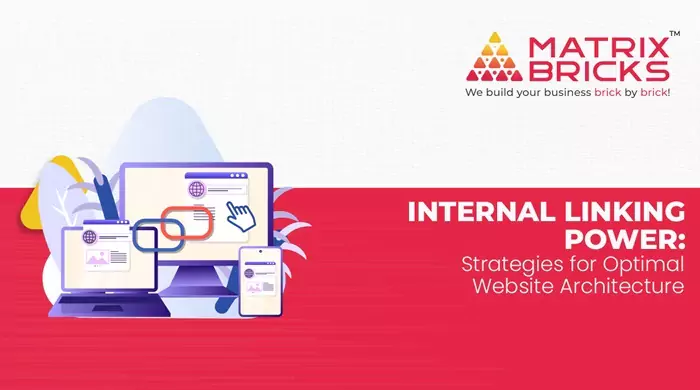
In the vast digital landscape where websites compete for attention, having a robust internal linking strategy is akin to building a solid foundation for your online presence. Internal linking isn’t just about connecting one page to another; it’s about creating a seamless web of interconnectedness that enhances user experience, boosts SEO, and maximizes the visibility and authority of your website. In this article, we’ll delve into the intricacies of internal linking and explore strategies to leverage its power for optimal website architecture.

Understanding Internal Linking
Internal linking refers to the practice of linking one page of a website to another page within the same domain. These links serve multiple purposes, including:
Navigation:
Internal links help users navigate through different sections of a website, making it easier for them to find relevant information.
Contextual Relevance:
By linking related pages together, internal linking establishes contextual relevance, guiding users to additional resources or information that complements the content they are currently viewing.
SEO Benefits:
Search engines use internal links to crawl and index pages on a website. A well-structured internal linking system can improve the discoverability of content and enhance its ranking potential.
The Power of Strategic Internal Linking:
Establishing a Hierarchical Structure:
A hierarchical structure categorizes content based on importance and relevance. The homepage sits at the top, followed by main category pages, subcategories, and individual posts or pages. By strategically linking upwards and downwards within this hierarchy, you distribute authority and relevance throughout your website.
Utilizing Anchor Texts Effectively:
Anchor texts play a crucial role in internal linking as they provide context to both users and search engines about the linked content. Instead of using generic phrases like “click here” or “read more,” opt for descriptive anchor texts that incorporate relevant keywords. This not only improves user experience but also reinforces the topical relevance of linked pages.
Implementing Content Silos:
Content silos involve grouping related content into thematic clusters or silos. Each silo focuses on a specific topic or keyword, with a pillar page serving as the central hub. Internal links within the silo strengthen the topical relevance of individual pages and contribute to the overall authority of the cluster, making it more attractive to search engines.
Capitalizing on Internal Link Juice:
Internal links pass authority, or “link juice,” from one page to another within the same domain. By strategically placing internal links from high-authority pages to those that need a boost, you can distribute link equity effectively throughout your website. This can help improve the ranking potential of important landing pages or newly published content.
Optimizing for User Experience:
User experience should always be a priority when implementing internal linking strategies. Ensure that your links are intuitive, relevant, and seamlessly integrated into the content. Avoid overloading pages with excessive links, as this can overwhelm users and dilute the impact of your internal linking efforts.
Best Practices for Optimal Website Architecture
Audit Existing Internal Links:
Conduct a thorough audit of your website’s internal linking structure to identify opportunities for improvement. Look for orphaned pages (pages with no internal links pointing to them), broken links, and instances of over-optimization. Use tools like Google Search Console and third-party SEO software to gather data and insights.
Plan Internal Linking Hierarchy:
Develop a comprehensive plan for internal linking that aligns with your website’s goals and content strategy. Map out the hierarchical structure, content silos, and key landing pages. Consider the user journey and how internal links can facilitate navigation and discovery.

Create Quality Content:
High-quality content forms the foundation of effective internal linking. Focus on creating informative, engaging, and relevant content that addresses the needs and interests of your target audience. This not only attracts visitors but also encourages natural linking and sharing, further enhancing your website’s authority.
Monitor and Iterate:
Internal linking is not a one-time task but an ongoing process that requires monitoring and optimization. Regularly analyze the performance of your internal links, track changes in search engine algorithms, and adapt your strategy accordingly. Continuously seek opportunities to improve the user experience and maximize the SEO benefits of internal linking.
Conclusion
Internal linking is a powerful yet often overlooked aspect of website architecture. By strategically connecting pages within your website, you can enhance user experience, improve SEO performance, and establish a strong foundation for online success. Implementing a well-planned internal linking strategy, rooted in hierarchy, relevance, and user-centricity, can unlock the full potential of your website and drive sustainable growth in the competitive digital landscape.





